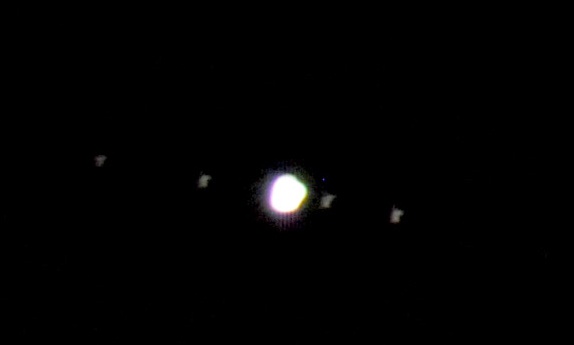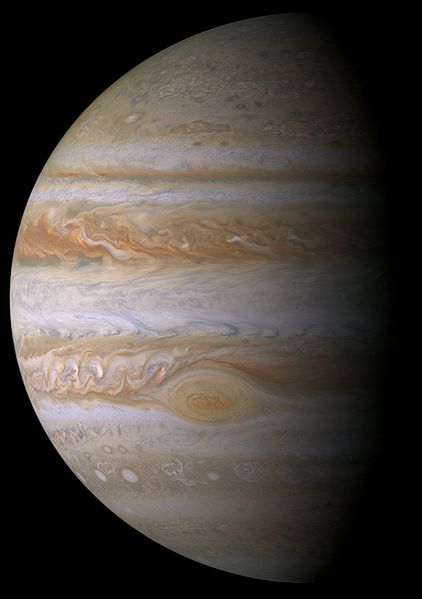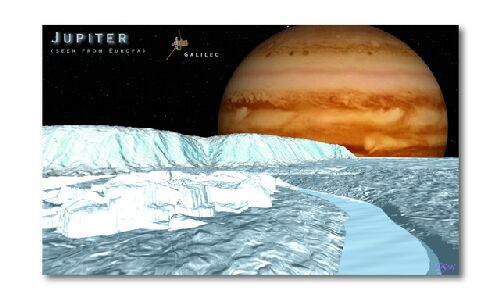JUPITER
Jupiter, a gas giant, is the fifth planet from the Sun.
It is 778.5 million km (483.7 million miles) from the Sun.
Jupiter is the largest planet in our solar system.
Its diameter is 11 times the size of Earth's.
It takes 12 Earth years for Jupiter to orbit the Sun.
Jupiter rotates on its axis quickly.
A day on Jupiter is only 9 hours 55 minutes long.
Jupiter has 63 moons. (photo of Jupiter and the moon Io)
Jupiter might have a small core of ice-rock about the size of Earth
but is mostly a giant ball of liquid hydrogen and helium gases.
The "stripes" are caused by strong winds in the upper atmosphere.

The planet's surface is composed of
thick red, brown, yellow and white clouds.
Jupiter has a huge red spot on its surface,
which has puzzled astronomers for nearly 350 years.
We now know that it is a huge swirling wind storm.
The spot is 3 times larger than the planet Earth.
The planet was named after the Roman god Jupiter.
The god Jupiter was the ruler of the gods.
It is the third brightest object in the Solar System.
Only Venus and the Moon are brighter.

Jupiter and four moons in the night sky
credit: photo by Eric Kilby, licensed under
Creative Commons Attribution ShareAlike 2.0 License
Jupiter has been visited seven times by spacecraft from Earth.
NASA's Pioneer 10 was the first in December 1973.
In 1979 Voyager 1 discovered rings of dust around the planet.
The dust particles may be from meteroids that
crashed into the moons.
In December 1995, NASA's Galileo spacecraft
web page by J.Giannetta information from
NASA and Universe Today
dropped a probe into Jupiter's atmosphere.
Then Galileo spacecraft began a study
of Jupiter and the largest moons.
to avoid colliding with one of Jupiter's moons.

Jupiter as seen by the space probe Cassini
Jet Propulsion Lab of NASA
source http://photojournal.jpl.nasa.gov/catalog/PIA04866
On Dec.30 2000, the spacecraft Cassini studied the planet
and its moons for 3 months before heading to Saturn.
NASA'S New Horizons spacecraft flew by Jupiter in 2007
on its voyage to Pluto. It should reach Pluto in 2015.
Space art - A look of Jupiter from Europa, one of its moons.

image of Jupiter and moon Europa -
from http://samadhi.jpl.nasa.gov/art/pix/jupiter.jpg
"Courtesy Jet Propulsion Laboratory.
Copyright (c) California Institute of Technology,
Pasadena, CA. All rights reserved."
SPACE INDEX
jgiannet@hotmail.com
2005
updated April 2009